
DAY 12
(Reading time: 6 minutes)
We were really looking forward to Fo Guang Shan. A magnificent place with a huge seated Buddha statue and guaranteed authentic relics? We had to see it!
We were a bit worried that such a rare place would be overcrowded with visitors, especially at the weekend, so we went on a Monday. From the HSR Zuoying station (bus stop in front of the station), E02 Harvard Express departs at intervals that are hard to determine (according to some sources, about 1 bus every 1.5-2 hours). We couldn’t find any reliable information online, there was no timetable on site, and the electronic board wasn’t working. Once again, we stood in line and waited. The bus arrived around 10 AM, the driver only picked up enough passengers (including us) to fill available seats inside, and off we went on the trip. One-way fare cost 70TWD and took about 40 minutes. We really didn’t want to wait for the next bus for god knows how long. Smart taxi drivers take advantage of this! They bypass waiting people, rely on their desperation and uncertainty, and offer a ride. We also used one on the way back.
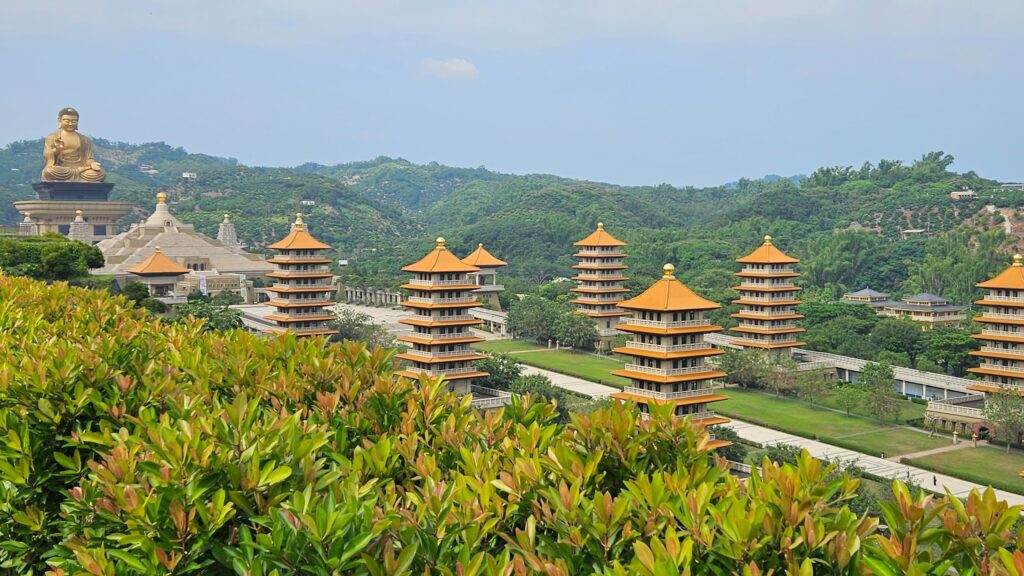
Fo Guang Shan is a cultural, religious and educational center named after a Buddhist organization practicing in Taiwan. The whole complex is extensive and divided into three parts: Fo Guang Shan Monastery, Sutra Repository, and Buddha Museum. Let me guide you through it.
Fo Guang Shan Monastery

In this (rather private) part, you’ll find the organization’s administrative buildings, monastery, university buildings, education center, facilities for practitioners, a cemetery and shrines. This is where we started.

The dominant feature is a 30-meter-high statue of standing Buddha Amitabha towering among hundreds of other smaller statues.
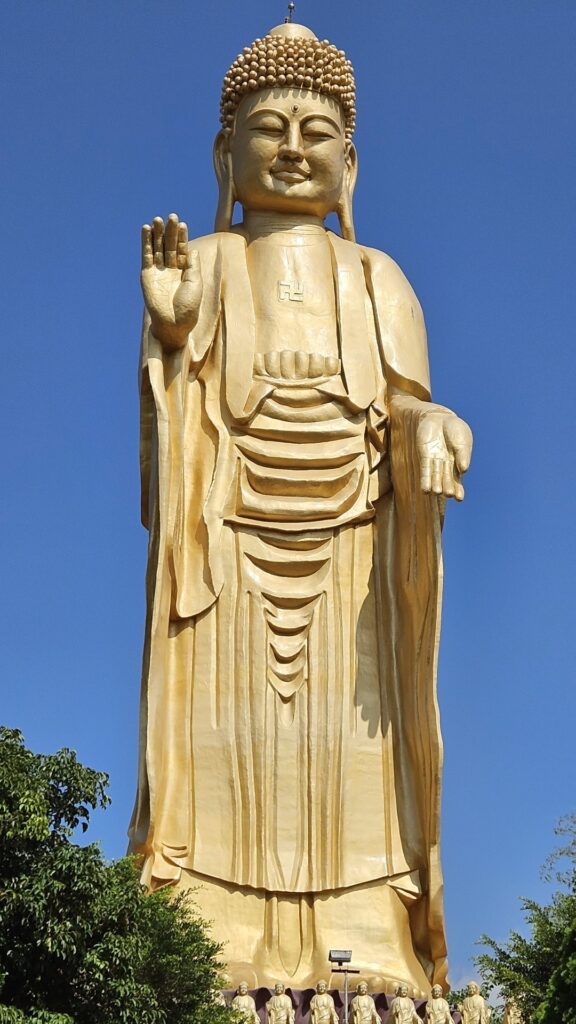
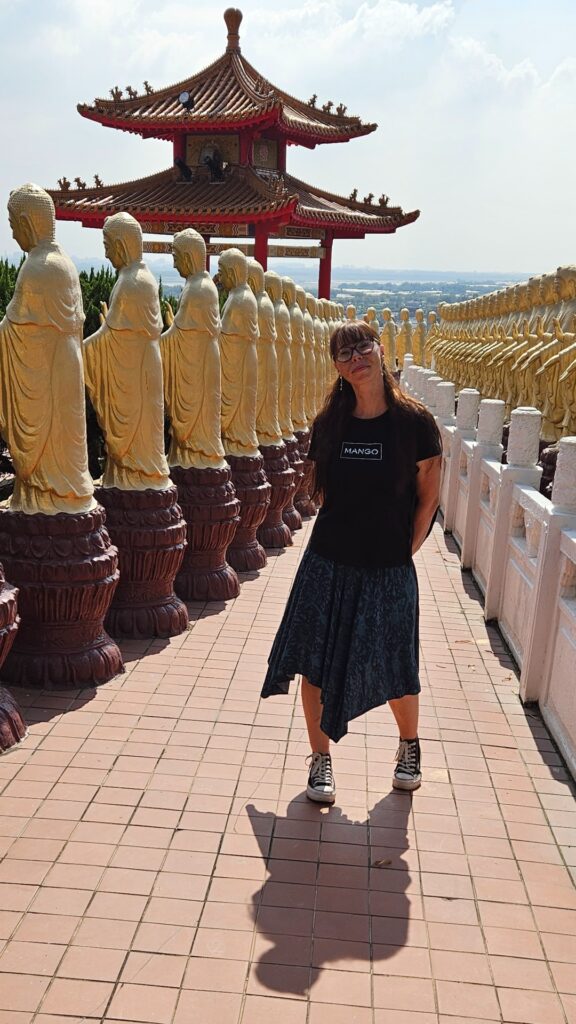
Do you see the crowds of tourists on a Monday? Well, we didn’t either… but we didn’t expect the complete opposite either. There was no one anywhere, not a soul. Understand, no living human soul. Deserted, empty.
Sutra Repository

The newest building of the entire complex serves as a repository for a collection of over 50 Buddhist canons. We didn’t get inside, and our presence alone aroused suspicions of a local official. He watched us for a long time and eventually started asking if we were lost and where we were headed. Is it really so unusual to see tourists in the area?
Buddha Museum
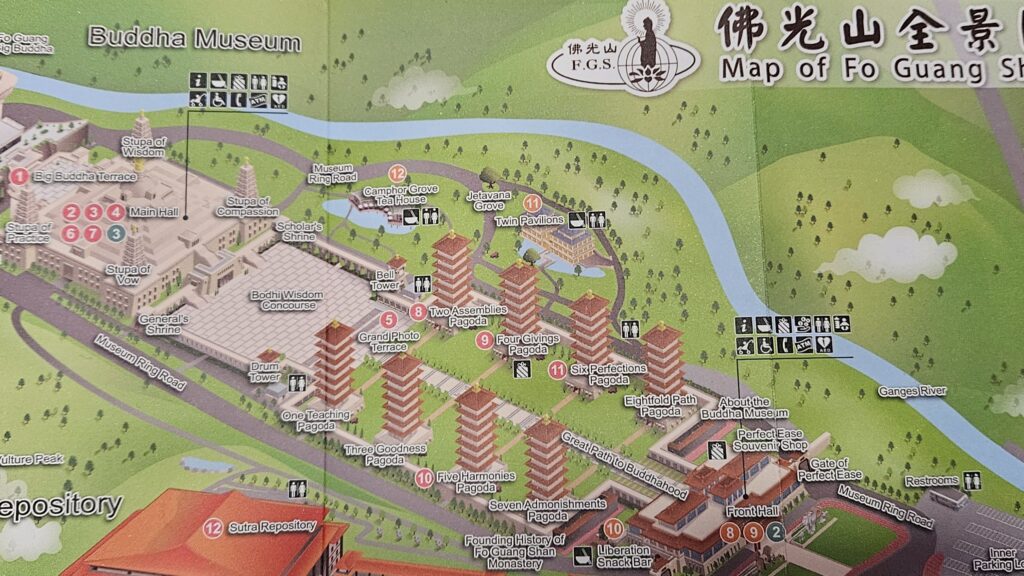
The path is lined with eight pagodas, at the end of which sits the Buddha Shakyamuni (one of the largest seated Buddha statues in Asia – 40m tall). This is the main reason why the vast majority of people visit, and here we finally saw some movement.

Most pagodas are open, each dedicated to a different aspect of Buddhism. The museum itself is divided into several parts – exhibitions of Buddhist festivals, history of the monastery, life of Buddha and more. In the main hall, you’ll find Avalokitesvara Shrine, Golden Buddha Shrine, and all the way back, Jade Buddha Shrine hiding the greatest treasure of the entire complex – Buddha’s tooth.
Relics are remnants of saints, prophets, or other highly revered figures associated with various religions. These are material objects closely related to the life or deeds of the person; most commonly bodily remains (bones, teeth…), clothing, or everyday objects (bowl, figurine, cloth…). In Christianity, the most famous relics include the Holy Grail and the Shroud of Turin. Buddhists, on the other hand, keep Buddha’s bones, teeth, or ashes in various places. But what about the authenticity of all such relics, especially those associated with the highest authorities of the respective religions? Truth or myth? Can we believe it because there are records of findings? Or do we believe it because we want to? The answers are unclear, and so the cult of relics continues…
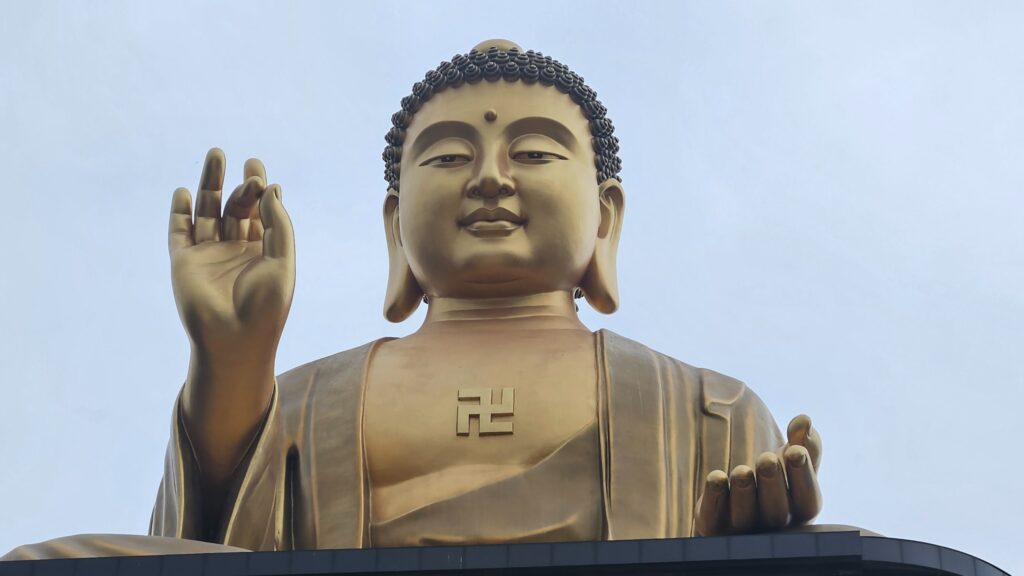
The atmosphere of this place naturally arouses interest in deeper knowledge not only about Buddha himself but also his teachings, symbolism, places he stayed and people he met. It was a moment of dreaming in a place imbued with spiritual power, and motivation for further self-education.
Then it was time to return.
Bus didn’t take us.
The next one wasn’t scheduled for another 2 hours.
We weren’t going to wait.
A local taxi driver didn’t even have to be proactive; we specifically approached him. Although he couldn’t speak any English, fortunately it occurred to me to approach three young girls who seemed like they also wanted to return home before dusk. The girls spoke Chinese, arranged the ride and we split the cost among ourselves (the two of us and the three young ladies). We paid a total of 820 TWD (+-) for approximately 25 kilometers. We arrived in Kaohsiung still in daylight and, considering the circumstances, for a reasonable price.
-endy-
DONKEY’S SPECIAL:
-mj-